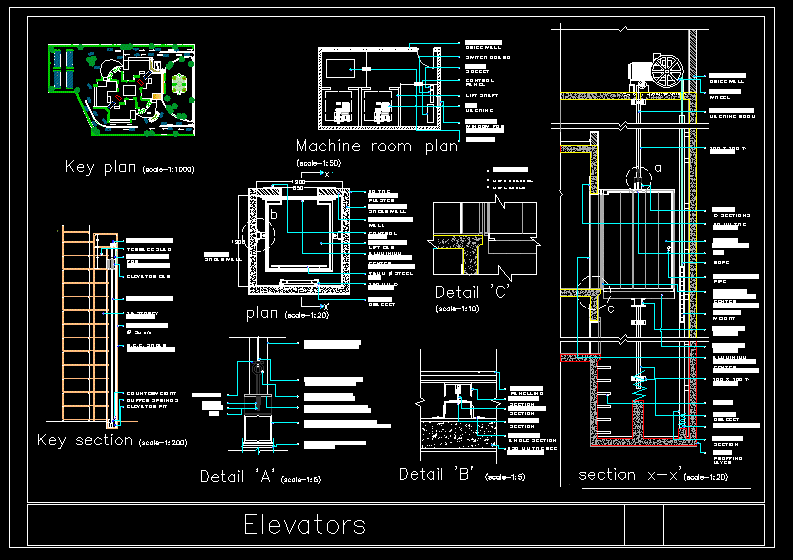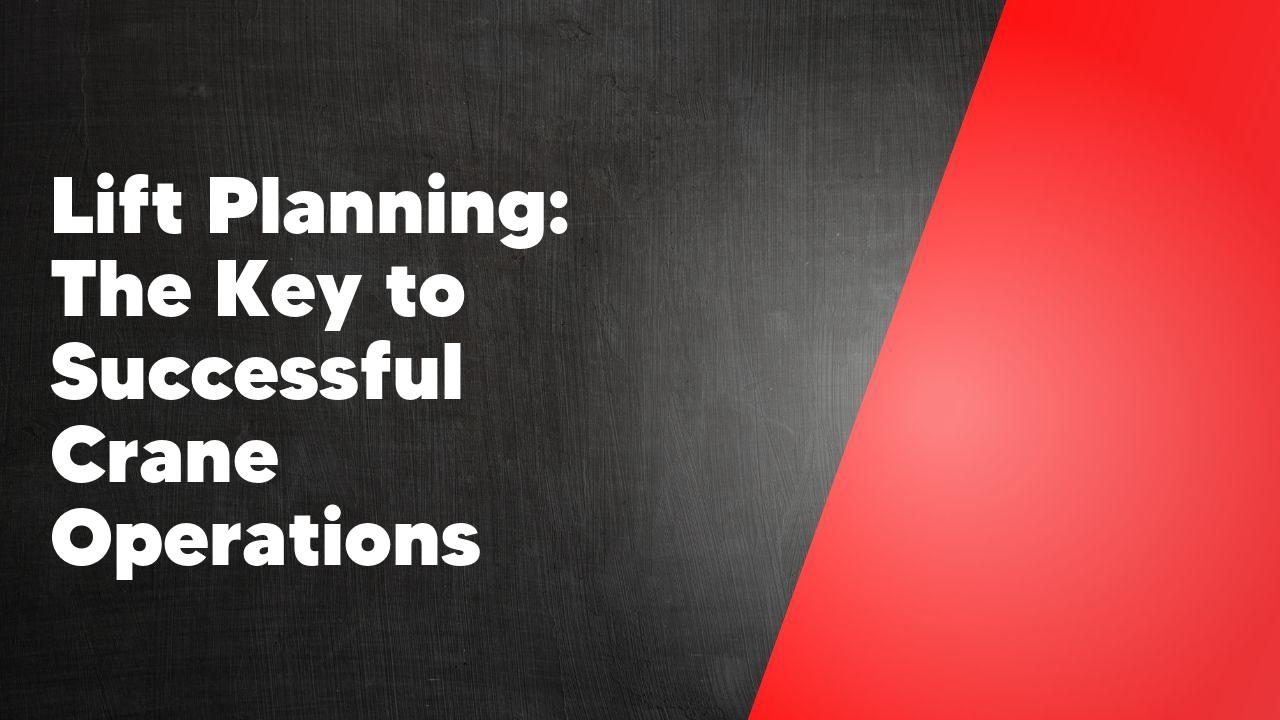In the world of construction and heavy lifting, proper lift planning is crucial for the success and safety of crane operations. From determining the right crane for the job to assessing the load capacity and environmental factors, lift planning involves a comprehensive analysis of various factors. This article explores the importance of lift planning and highlights the key steps involved in ensuring successful crane operations.
Understanding the Importance of Lift Planning in Crane Operations
Lift planning is a crucial aspect of crane operations that cannot be overlooked. It involves carefully assessing the load, the environment, and the crane’s capabilities to ensure a safe and successful lift. By understanding the importance of lift planning, operators can minimize the risk of accidents, injuries, and damage to property. A well-executed lift plan takes into account factors such as load weight, size, and shape, as well as the distance and height of the lift. It also considers potential hazards, such as power lines, wind conditions, and uneven terrain. By thoroughly analyzing these factors, operators can make informed decisions and implement necessary precautions to ensure a smooth and efficient lift operation.
Factors to Consider in Effective Lift Planning for Crane Operations

When it comes to crane operations, effective lift planning is crucial to ensure the safety and success of the operation. There are several factors that need to be considered during the lift planning process. Firstly, the weight and dimensions of the load must be carefully assessed to determine the appropriate crane and rigging equipment needed. The location and terrain of the lift site also play a significant role in planning, as they can impact the stability and maneuverability of the crane. Additionally, the weather conditions must be taken into account, as strong winds or rain can pose a risk to the operation. Lastly, the experience and qualifications of the crane operator and rigging crew should be evaluated to ensure they have the necessary skills and knowledge to carry out the lift safely. By considering these factors, effective lift planning can be achieved, minimizing the potential for accidents and ensuring a successful crane operation.
The Role of Risk Assessment in Lift Planning for Crane Operations
Risk assessment plays a crucial role in lift planning for crane operations. It involves identifying potential hazards and evaluating the level of risk associated with each hazard. This process helps in determining the necessary precautions and safety measures that need to be implemented to minimize the risk of accidents and injuries during crane operations. Risk assessment also helps in identifying the appropriate equipment and techniques that should be used for a particular lift. By conducting a thorough risk assessment, crane operators can ensure that they have a comprehensive understanding of the potential risks involved in a lift and can take appropriate actions to mitigate those risks.
Essential Steps in Developing a Comprehensive Lift Plan for Crane Operations
Developing a comprehensive lift plan is crucial for ensuring safe and efficient crane operations. There are several essential steps that need to be followed in order to create a thorough lift plan. Firstly, it is important to assess the site conditions and identify any potential hazards or obstacles that may affect the lifting operation. Next, the load weight and dimensions must be determined in order to select the appropriate crane and rigging equipment. Additionally, the lift plan should include a detailed sequence of operations, including the positioning of the crane and the order in which the lifts will be performed. Finally, it is essential to communicate the lift plan to all personnel involved in the operation to ensure everyone is aware of their roles and responsibilities. By following these steps, a comprehensive lift plan can be developed to ensure the safety and success of crane operations.
Best Practices for Executing a Successful Lift Plan in Crane Operations
Executing a successful lift plan is crucial in crane operations to ensure the safety of workers and the efficient completion of tasks. One of the best practices for executing a successful lift plan is to thoroughly assess the site and identify any potential hazards or obstacles that may affect the lifting operation. This includes checking for overhead power lines, unstable ground conditions, or nearby structures that could interfere with the crane’s movement. Additionally, it is important to properly communicate and coordinate with all personnel involved in the lift, including the crane operator, riggers, and signal persons. Clear and concise communication is essential to avoid any misunderstandings or errors during the lifting process. Regular inspections and maintenance of the crane equipment should also be conducted to ensure its reliability and functionality. By following these best practices, crane operators can minimize risks and successfully execute lift plans.
The Benefits of Proper Lift Planning in Ensuring Safe and Efficient Crane Operations
Proper lift planning is crucial for ensuring safe and efficient crane operations. By carefully assessing the lifting requirements and potential risks, lift planners can develop a comprehensive plan that minimizes the chances of accidents and maximizes productivity. One of the key benefits of lift planning is the identification of potential hazards and the implementation of appropriate safety measures. This includes evaluating the load weight, determining the appropriate crane size and configuration, and assessing the site conditions. Additionally, lift planning allows for the coordination of resources and personnel, ensuring that everyone involved is aware of their roles and responsibilities. Overall, proper lift planning is essential for creating a safe and efficient work environment for crane operations.
Conclusion
In conclusion, lift planning is a crucial aspect of ensuring successful crane operations. It involves careful consideration of factors such as load weight, crane capacity, site conditions, and safety measures. By implementing a thorough lift planning process, crane operators can minimize risks, increase efficiency, and ultimately achieve successful outcomes in their operations.
What is lift planning?
Lift planning is the process of carefully analyzing and preparing for a crane operation to ensure its success and safety. It involves assessing the load, determining the appropriate crane and rigging equipment, and creating a detailed plan for executing the lift.
Why is lift planning important?
Lift planning is important because it helps minimize the risks associated with crane operations. By carefully considering factors such as load weight, crane capacity, site conditions, and potential hazards, lift planning helps prevent accidents, injuries, and damage to property.
Who is responsible for lift planning?
The responsibility for lift planning typically falls on the shoulders of a qualified person, such as a crane operator, a lift director, or a designated lift planner. This person should have the necessary knowledge and experience to assess the lift requirements and develop a safe and effective plan.
What factors should be considered during lift planning?
Several factors should be considered during lift planning, including the weight and dimensions of the load, the crane’s capacity and reach, the site conditions (such as ground stability and overhead obstructions), the presence of power lines or other utilities, and any relevant regulations or industry standards.
What are some common hazards associated with crane operations?
Some common hazards associated with crane operations include overloading the crane, unstable ground conditions, improper rigging or lifting techniques, contact with power lines, inadequate communication between personnel, and lack of proper maintenance and inspection of the crane and rigging equipment.
How can lift planning help prevent accidents?
Lift planning can help prevent accidents by identifying and addressing potential hazards before the crane operation begins. By carefully assessing the lift requirements, selecting the appropriate equipment, and creating a detailed plan that includes safety measures and contingency plans, lift planning helps ensure that the operation is carried out safely and efficiently.
